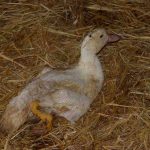Reovirosis of Muscovy duck is a frequent viral disease in France, with a significant economic impact, especially due to the loss of growth and the heterogeneity it induces.
The disease agent and its pathogenicity
The etiological agent is a reovirus. It is a segmented, non-enveloped, 80 nm diameter, double-stranded RNA virus that is genetically and antigenically different from chicken reoviruses (agents of chicken viral arthritis or malabsorption syndrome). There are different, variable and poorly known serotypes and pathotypes of the Muscovy reovirus.
The virus is very resistant and can therefore survive several months in the outdoor environment and droppings. It is very resistant to common disinfectants, especially quaternary ammoniums and phenols. It is also heat resistant: more than 6 hours at 56°C.
After oral ingestion of the virus, it first multiplies in the cells of the intestinal mucosa (diarrhea) and then goes into the bloodstream. It then localizes and multiplies in the target tissues: tendons, joints, lymphoid organs, liver, heart, kidneys. The damage to the joints causes severe pain. In lymphoid organs, viral multiplication is responsible for intense immunosuppression.
Epidemiological data
Reovirosis often reaches the Muscovy ducklings from 3 weeks of age. In general, 2 peaks of sensitivity are observed: at 15-20 days after the stress of debeaking, and during the period of 30-50 days of age. However, reovirosis lesions can be found in younger subjects (as young as 12 days of age), without any apparent disorder. Cases are also described at the end of the “raising” period, around 70 days.
NB: Cases of goose reovirosis have (rarely) been described, with a clinical picture very similar to the one observed in Muscovy ducks. The virus has also been isolated from different duck species, such as the Mallard, Pekin duck and some ornamental breeds.
Only the horizontal transmission is known. It is done by ingesting contaminated food or water. Virulent materials are the droppings of contaminated birds. Dusts carried by the wind, livestock equipment, personnel, insects, and in general everything that has been in contact with the droppings of contaminated herds (role of manure) can be considered as virulent materials as well. Generally, the disease occurs in one pen and then spreads slowly over 2-3 weeks to other pens. Morbidity is very high, and mortality can reach more than 10%.
The disease can be triggered by stress, for example following traditional interventions in this production: vaccination-debecking-degriffing (see sheet: production of the broiler duck).
The prevalence of the infection appears to be high. Serological studies show a high percentage of seropositive batches (70 to 90%). There is a wide variety of reoviruses that can affect ducks, but it seems that each farm site has a specific reovirus.
Clinical manifestations of the disease
The incubation period is 5 to 7 days. Symptoms can last 2 to 3 weeks, with an increase in morbidity in buildings.
Symptoms
- Acute form : the typical symptom is “ramping”, animals crawl their legs backwards and refuse to move, due to joint, tendon and muscle pain. An entire batch can thus remain lying down. Enteritis often precedes these disorders. Birds get dirty, water and food consumption and DAP decrease. Animals become feverish. The “ramping” causes feather falls. Mortality is variable and can be significant.
- Chronic forme: locomotor disorders are inapparent. There are small episodes of mortality, lasting 7 to 10 days, as a result of superinfections, and a slight decrease in the zootechnical performance of the batch.
Lesions
The spleen is enlarged, with more or less important and numerous necrosis points (whitish granulation in the white pulp). These foci of necrosis may also appear on the liver, with a bronze green colour and on the kidneys. Lesions of aseptic pericarditis, resulting from infiltration of the pericardium by inflammatory cells, associated with fibrinous exudation, have been reported. At autopsy, petechiae and congestions of the synovial sheath of the gastrocnemius tendons can sometimes be observed. Histological examination reveals tenosynovitis lesions. Nephritis lesions are visible and follow a lack of water consumption in ducks that no longer move.
The infection causes immunosuppression, which explains the lesions associated with bacterial complications: septic pericarditis, perihepatitis and liver hypertrophy, aerosacculitis, caseous pneumonia.
The diagnosis
Clinical suspicion
The clinic allows the diagnosis of suspicion to be made. Mortality is the main warning factor. Confirmation is provided by histology and possibly by serology.
Differential diagnosis
Derzsy’s disease, parvovirus of Muscovy duck.
Disease prevention and control
Treatment
The treatment is symptomatic, based on vitamin C to stimulate the immune system, and aspirin to fight against joint pain. Due to under-consumption of water, caution should be taken regarding drug sub-dosages.
Bacterial complications should also be treated with antibiotic therapy based on an antibiotic susceptibility test. But antibiotic treatment should not be systematic and should not be used too early in the course of the disease.
Prevention
There is no vaccine (strains that are too variable in terms of antigenicity).
Prophylaxis is therefore only sanitary: the viral reservoir must be removed, by emptying the slurry pit (difficult to carry out depending on the type of slatted floor), spreading the slurry far from the livestock buildings. Passive vectors must be controlled: insecticides in buildings, larvicides in pits. The cleaning and disinfection protocol must be rigorous (do not forget the slatted floor). It is necessary to optimize the starting conditions and avoid or limit stress, especially during zootechnical interventions.






